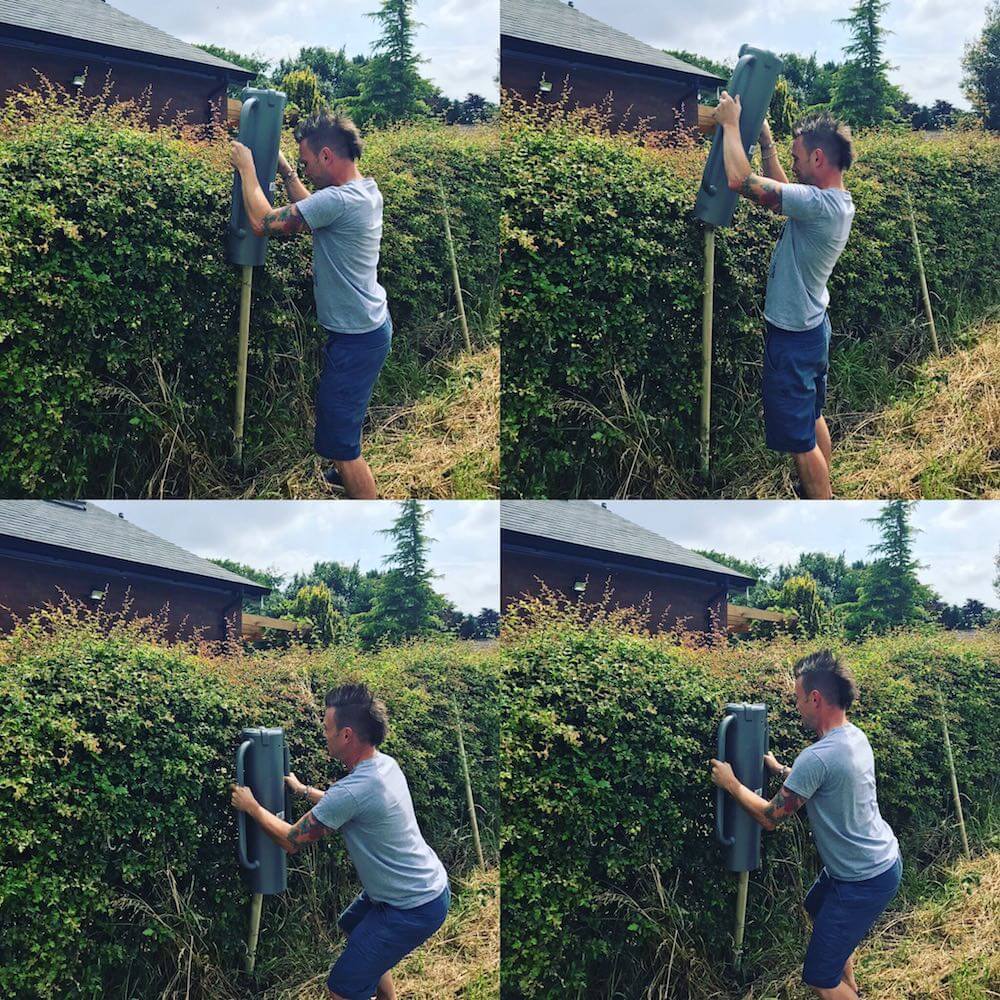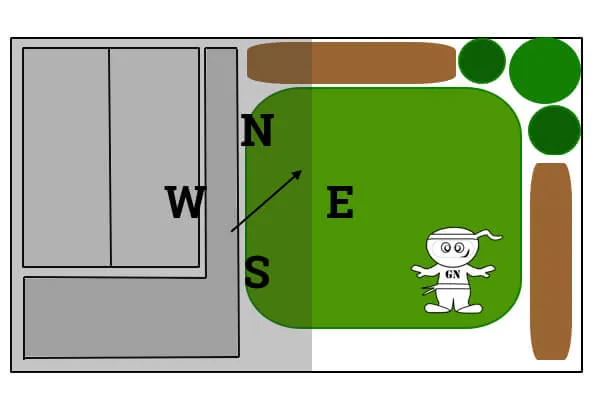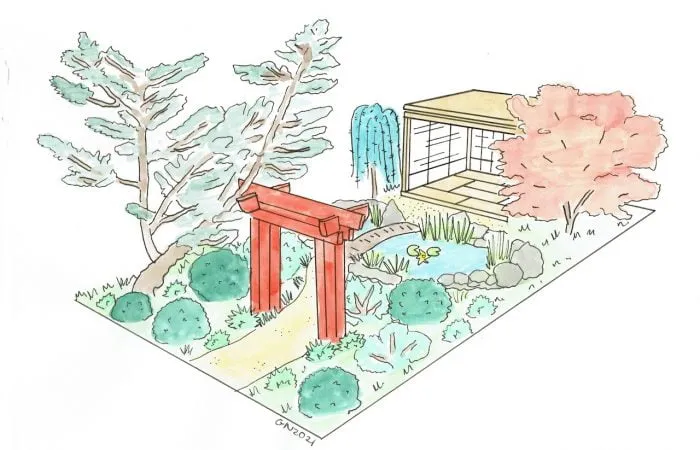How to design a Dog friendly garden
 Lee Burkhill: Award Winning Designer & BBC 1's Garden Rescue Presenters Official Blog
Lee Burkhill: Award Winning Designer & BBC 1's Garden Rescue Presenters Official Blog

This Dog-friendly garden design guide should help you avoid frustration when designing a garden for your dogs. Whilst it might not be rocket science this article could save you some heartache from plants that don't survive, turf that turns yellow and flower beds that become a playground for your beloved dog!
There are usually two types of dog-friendly garden design clients.
Having designed a number of dog-friendly garden designs I thought it was about time to spill the beans on the criteria I use when designing such gardens.
Even the best-trained puppy or dog will want to accompany you where ever you go in the garden especially if it's a new garden. Now most garden fanatics will know that trying to eliminate all threats can be difficult, if not impossible. Reducing the risk of danger is relatively easy with some planning.
Before you start any new garden design or planting the first step is to ensure that your garden is a safe haven for dogs. If you know you have a busy road, a gap in the hedge or a set of really key delicate plants then the best idea is to ensure your dog can't get harmed or harm your plants.
Hurdles and a small trellis can be a good natural screen for an area you really need to keep your dogs off, ie seedlings or veg. Obviously, as time goes on and your dog learns which areas are off-limits you can reduce or even remove these small screens. It all depends on the attitude of your dog.

Always screen off ponds until your dog is used to them, and always use a shoreline so they can get out if needed. This dog is a seasoned pro at water safety!
Making your dog feel safe in the garden will reduce the likelihood of your dog getting too over-excited and will provide consistency for them. If you're introducing new features be aware that your dog will see these as a new challenge or something they must explore. So bear that in mind.
Always consider safety first and remember your dog isn't a mind reader so best be safe than sorry with your garden design.
Paths and surfaces are the first things I look at in designing a garden for dogs. This is because in our busy lives sometimes, dog owners may have to use their garden as a source of exercise for their dog. Sometimes with work and family going out for that walk through the woods is not going to happen.
Therefore it's important that paths and surfaces in your garden allow a dog to walk and run if possible. I always prefer hard landscapes for this purpose. It also means that dogs can scratch their claws as they run, saving the need for endless nail clipping. It also provides a suitable surface for cleaning, hosing down for any accidents!

Gravel is usually a no-no, as dogs tend to get over-excited and dig through it. It can also lead to issues with dog 'waste' and young pups potentially swallowing very small gravel. Scottish cobbles and pebbles, however, are fine for mulching or edging beds. These are about the size of a large potato and only the most tenacious hungry dog would try to swallow one.
The Dogs trust show garden 2016 at Hampton Court used large cobbles in its dog-friendly garden.

Be careful with gravel, always choose large cobbles that can't be swallowed or chewed easily also dog mess can be really tricky to pick up on a gravel bed!
Did you know that you can take my course and learn how to become a Garden Ninja yourself? Click here for details
This is a common question that I'm asked when people have just brought a puppy home. You then realise your garden hedging suddenly has gaps in or your fence has suddenly developed a loose panel and needs a quick fix! This guide is for when you need a solution that is lower cost and super quick to achieve.
This is especially true if you have a large garden or you want to screen off a smaller area. The quick answer is to use wood fence posts and chicken wire to sensitively screen off those gaps without a huge expensive wooden fence.

Position your fence poles 2-3 meters apart and then using the fence post driver, drive the fence post in. A few heavy thrusts of the driver downward should do it. The closer the posts the better as this allows less loose mesh in the middle for a dog to tunnel under.

Unwrap the chicken wire and using a heavy-duty staple gun, staple the first end of the chicken wire against the first post. Make sure it's super-secure all the way down to the ground.

Once you've stapled all your chicken wire to all your fence posts its time to use tent pegs to then double secure the wire in between the posts. Hammer the tent pegs in at an angle to secure the bottom of the wire from tenacious pups!

I've found that this is the most cost-effective way to secure an area of the garden. It's also super quick meaning even if you've left it to the last minute you can still secure your garden before your pup arrives.

All dog owners know that dogs just want to play when out in the garden. The stimulus of flowers, soil, insects and textures can sometimes send them into an absolute frenzy.
To ensure that your beloved dogs don't run riot through your prize borders create a specific play zone for them in your garden. This can be an area where you have their toys, that's probably hard landscaped or low fuss.

Make a point of playing with your dogs here, rather than the more manicured parts of the garden. Put their water and food bowl out there to give them ownership of this part of the garden. Reward them when they play there to reinforce the zone as theirs. They are then less likely to take over other areas of the garden!
Dogs don't have hands so pretty much use their mouths and noses to identify and explore the world. This is also true with plants. For the most part, all a dog or puppy will experience when chewing a plant is an unfamiliar taste that they probably won't like. They do it once, learn and then don't do it again. Who am I kidding, they will do it a number of times until you stop them!

However, there are a number of toxic plants that are poisonous to dogs. It goes without saying that you should avoid or screen off any of these plants in your garden if you're worried. Unless you have a seasoned well well-behaved dog that is through the chewing plants' phase.
Even so, it's wise to avoid these, especially if there are young children as well. The Kennel Club provides a list which I've also included below with some other no-go plants. Always check on the RHS plant finder to see if the plants you are thinking of using are toxic. I find giving my dog a toy when out in the garden saves any potential plant chewing.

Here is my list of safe plants for dogs, those species that if they chew shouldn't be toxic. This is just a very short list, there are literally thousands of suitable plants. These are my tried and tested bulletproof plants though. Again, always check the label or RHS plant finder.
Here is an example of a dog-friendly garden design I created for a client. The client had two adult dogs. One was a basset hound that loved to dig and a German Shepperd who loved clawing grass. Their back garden was in a complete state of disrepair, so they called Garden Ninja in to redesign it and make it dog-proof!

This dog friendly garden has been designed with zones. This means that there are separate areas in the garden for different uses. We used hard landscaping and pavers to ensure the routes through the garden could be cleaned and help keep dog's claws down too.
The flagged terrace directly outside the square orangery on the left of the design is the dog zone. It is where the dog's food, water and play toys will be kept. It's also a space that has a seating area for people who can sit with the dogs. It has a raised rill water feature for interest. This way the dogs can't fall into the water. It also acts as a screen for some of the more delicate beds. At the far left is a summer house and fenced-off area for the dogs as well which can be used if guests are coming over or the couple want to garden without the dogs getting their noses in their beds!
There is a woodland area full of ferns, Dicentra, Hostas and dog-friendly 'bullet-proof' plants. This area is tightly packed with low-growing, shade-loving plants. The dogs in this garden have never eaten plants, even so, the plants are non-toxic.

Then there is a working area in the middle with a glasshouse and beautiful annual flowers. Thinks like Rudbeckia and Stipa grasses. There is zero turf in this design due to the previous issues. There's plenty of hard landscaping which can be washed and brushed easily to keep it clean. You may also see there are two nooks intentionally designed in this garden between the woodland and dog zone. This is so the dogs have a refuge if the garden gets busy out of the way of wheelbarrows and other people. Also as the sun moves around the dog beds can be moved so they can always find shade. This is to prevent the dogs from getting too stressed, for example when the garden is in full swing for say a garden BBQ!

So what has this got to do with dog-friendly garden design? Well, dogs are renowned for their love of digging especially if they see you digging over the garden each year. The no-dig method reduces the need to dig and means your dog is less likely to imitate you. It also means less labour for you and more time to spend with your dog. It's a win-win!
The no-dig method of gardening is becoming quite fashionable at the moment and for good reason. It's organic, super easy to achieve and helps the environment. No dig is where you cultivate the ground the very first time you use it, ie dig and add organic matter but then you leave it.

You plant in it but never rotovate or re-dig the border. The aim is that the roots of the plants, natural microbes, organisms and bacteria living in the soil keep it cultivated for you. Breaking it up, enables water to drain, and nutrients to be absorbed and converted into food sources for the living organisms and plants. It's also super easy once established. At the end of each growing season, you simply add organic matter or compost to the beds as mulch and let nature do the rest.
Raised beds are an excellent way to protect both your plants and your dogs. I frequently use raised beds in my dog-friendly garden design. You can also build inbuilt seating into them which helps save space in the garden.
Now here is a bone of contention, Yellow lawns. So why does having a dog turn your lawn green? It's because dogs' urine can cause scorch or burn marks on the grass when they pee. Now some say it's down to the acidity of the dog's pee or that it's the high nitrogen content. So I urge you to always do your own research along with the cures for yellow or brown grass spots.

Sometimes there is the recommendation to feed dogs a spoon of tomato juice to help reduce the acidity of the wee. I've got gardeners who swear by it. Others argue it can cause urinary tracts. I'm no vet. Surely dogs digest more questionable foods than natural tomato juice? So I'm not sure I buy into the risks of tomato juice. Again there are a number of methods but you know your dog best.
The only fully natural method to fully remove this is to chase around after your dog watering the spots after they go. That or train them to wee in a particular spot. What may help is to accept that part of the lawn will yellow or replace it with hard landscaping where wee can just be washed off.

Having both a garden and a dog can be a life-changing experience for the better. Your garden doesn't need to suffer or become off-limits because you want to have a dog. It just takes a bit of careful planning and structure to ensure both you and your dog are enjoying your garden to its potential.
Using hard landscaping can help cut down on mess and keep your dog's claws short. One less trip to the dog groomer! Choosing plants that are dog-friendly can reduce the risk that dogs that like to chew on things, especially puppies, are safe in the garden. For any real dangers or delicate areas, hurdles and trellis are a must.

Providing a dog play zone and safe haven will reduce the need for dogs to run riot through the garden as they have their own space.
If you're looking for a dog-friendly garden design why not get in touch? Alternatively, if this article has been useful why not share it to help spread the word about dog-friendly gardens!


You must be logged in to post a comment.






JOIN THE NINJAS

Be the first in line for new Guides, Discount codes and Offers
I wish to pot a few plants in my small garden, but have read that compost is seriously dangerous to dogs.
Can you advise on an alternative.
Would appreciate your input.
Thank you
Hi Lee. Can you advise which architectural plants are safe for dogs please? Thank you, Karen.